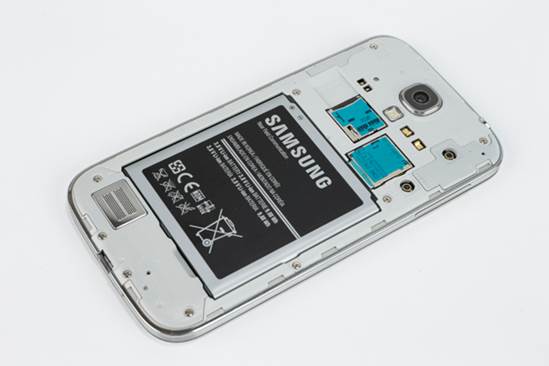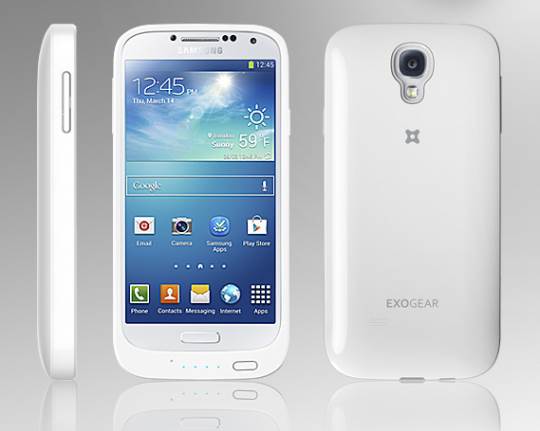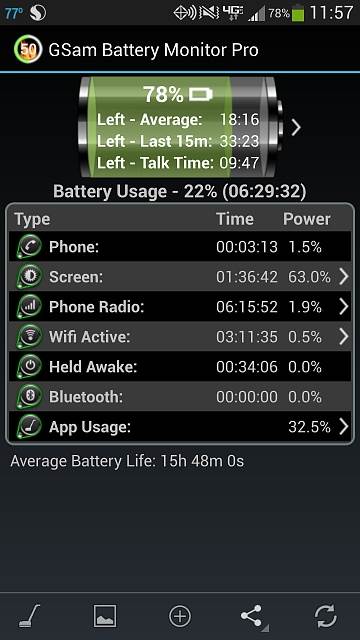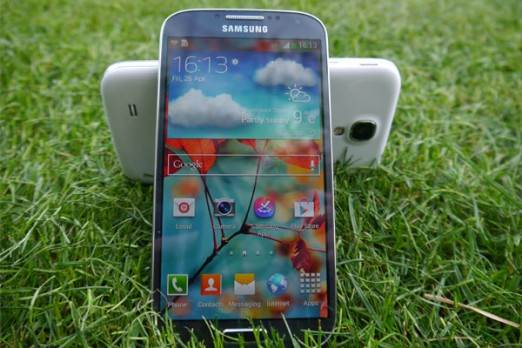Performance and battery life
In general, the premium phones gas newest
and coolest accessories at release. As you may guess, Galaxy S 4 continues that
traditions, as proved by daily performance and the synthetic test. This special
smartphone has 2 outstanding versions: one uses 1.9GHz Qualcomm Snapdragon 600 chipset
and another uses 8-core Exynos 5 chip of Samsung running at 1.6GHz, the latter
takes 4 Cortex-A15 processors and combines them with 4 A7 processors. Despite
the fact that Exynos provides LTE compatibility at all 20 frequencies, the
American carriers all follows the Snapdragon model.

Performance
and battery life
As a result, our conclusions about the
performance of the phone are based on the tests with Snapdragon 600, which is
combined with Adreno 320 GPU and 2GB RAM. This is the similar chip that HTC One
and LG Optimus G Pro uses, though GS4 run at faster speed than the both. CPU uses
Krait 300 – an enhancement from Krait 200 of S4 Pro, which leads to the 15% improvement
in IPC and “speed-enhanced” Adreno 320 GPU. 600 is also built by using the 28nm
process, which is similar to S4 Pro, and provides the 802.11ac support (apart
from the standard a/b/g/n). how does it compare to One, and which kind of
improvement does GS4 have compared to GS3? The following table answers such
questions, so let’s take a look at it.
Samsung
Galaxy S 4
·
Quadrant 2.0: 12,684
·
Vellamo 2.0: 1,903
·
AnTuTu 3.x: 26,143
·
SunSpider 0.9.1 (ms): 772
·
GLBenchmark Egypt 2.5 HD Offscreen (fps): 39
·
CF-Bench: 28,111
HTC One
·
Quadrant 2.0: 12,495
·
Vellamo 2.0: 2,429
·
AnTuTu 3.x: 25,140
·
SunSpider 0.9.1 (ms): 991
·
GLBenchmark Egypt 2.5 HD Offscreen (fps): 34
·
CF-Bench: 25,140
Samsung Galaxy S III
·
Quadrant 2.0: 5,875
·
Vellamo 2.0: 1,626
·
AnTuTu 3.x: 10,944
·
SunSpider 0.9.1 (ms): 1,194
·
GLBenchmark Egypt 2.5 HD Offscreen (fps): 15
·
CF-Bench: 12,922
Though it has just been a year since Galaxy
S III released, the smartphone industry has become a boastful receiver of some
“gigantic” improvements in processing power – and it’s not only that. The power
that used to rule of Snapdragon chipset is now concealing by Snapdragon 600, and
we fell that the history will repeat at the end of this year when 800 is
released. Think about it from 6 tests above, GS4 has set up a record in 5, with
One (the prior record breaker) not staying too far behind it.

Though
it has just been a year since Galaxy S III released, the smartphone industry
has become a boastful receiver of some “gigantic” improvements in processing
power – and it’s not only that.
In the HTC One
review, we have witnessed one of the most powerful smartphones we’ve ever used –
and as it uses the same chipset running at higher frequency, Galaxy S 4 belongs
to the same class. In general, GS4 runs amazingly well, but there’s one thing
that need to notify ahead: when Air View and Air Gestures are activated, we
realize the phone acts a little slow even in the most basic tasks. It will
always fulfill these, but we’re unable to notice some stutters. this seems to
show that the features of Sammy gobbles the processor and stays deactivated
unless you use them regularly (that is not sure to happen). In terms of game,
Adreno 320 excels here as it used to on One; in the GLBenchmark test which
ranks GS4 higher, you can’t be able to see the big difference when playing the
games heavy in graphics such as Riptide or Asphalt 7.
Samsung has increased the battery capacity
to 2,600mAh (from 2,100mAh on GS3), but its more complex components (higher-res
screen, better camera and more powerful processor) normally chew up more
energy. We’re not surprised to see the battery life measured by our battery
test (video repeating at 50% brightness and other standard settings) is only a
little better. In brief, it’s run through a complete cycle in 9 hours and 15 minutes.
If we’re comparing the T-Mobile versions, this means that GS4 beats GS3 for 17 minutes.
It’s higher than the average level for a premium phone at the beginning of
2013; as we have a habit to compare the pride of HTC, One reaches 6 hours and a
half in the same test. To be honest, we can’t check GS4 in a LTE area, though
the phone has full HSPA+ signal. About practical use, we normally have 14 or 15
hours of regular use before we need to charge. This means that the skilled
users can go through a whole working day with a little battery remained for the
train to get back home, and most of the others may use until they’re about to
go to bed before the battery is low.

Samsung
has increased the battery capacity to 2,600mAh (from 2,100mAh on GS3), but its
more complex components (higher-res screen, better camera and more powerful
processor) normally chew up more energy.
We use GS4 to make calls, the volume is
loud, though it’s slightly smaller than One and iPhone 5. We can hear a person
from another side clear, and it turns out that they don’t know that we’re
walking on a pretty crowded street thanks to the noise-disposal ability. The
used speaker phone is bigger than GS3, but it’s not as big as the BoomSound stereo
speakers of One.

We
use GS4 to make calls, the volume is loud, though it’s slightly smaller than
One and iPhone 5.
When the device has several versions, it’s
hard to define the network performance, at least for a testing model. Samsung provides
6 groups of possible radio frequency, so it’s the rights of each carrier to
define which works the best for their network. For example, T-Mobile and
AT&T all have 4-band LTE (band 2, 4, 5 and 17) and 4-band GSM/EDGE, but T-Mobile
offers 850/AWS/1,900, 2,100 DC-HSPA+ 42Mbps while HSPA+ band of AT&T covers
850/1,900/2,100. (Besides, T-Mobile has confirmed to us that its LTE antenna
works with 5-20MHz band). Verizon and Sprint all use 850/1,900 CDMA/EVDO as
well as 850/1,900 GSM/EDGE/UMTS/HSPA+, thought the option of Big Red provides LTE
in band 4 and 13 (700/AWS) while Sprint uses band 25 (1,900). Now Network use
removable SIM and will open international GSM roaming after 90 first days of
the services; we hope that Verizon provides the international roaming, but we
haven’t received the confirmation. The common international models, I9505 running
Snapdragon 600 and I9500 running Exynos, provide 4-band GSM/EDGE, 4-band HSPA+
(850/900/1,900/,2100) and the maximum of 6 LTE bands. All of them offer
different data performance depending on the specific model you use, though our T-Mobile
model has the speed which is equal to GS3 and other high-end phones which are
currently using the same network.